Published Jan 6, 2023
Nearly 20 Years Ago, One Enterprise Epic Set the Stage for Discovery
Both Enterprise and Discovery featured a new look at Vulcan culture that shook up the status quo.
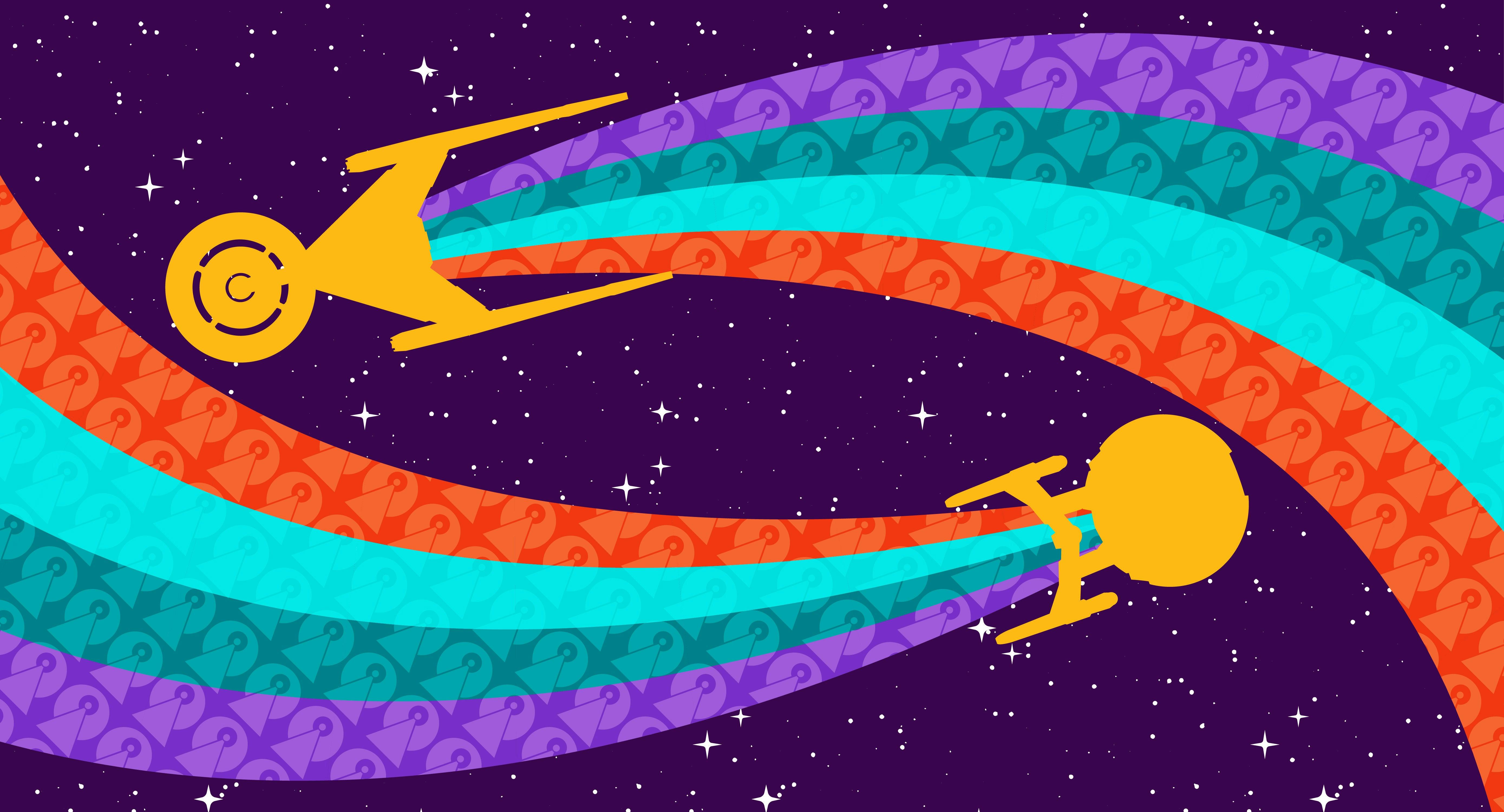
StarTrek.com / Rob DeHart
When Sarek and Amanda Grayson grapple with the complicated destinies of their children on Star Trek: Discovery, it’s easy to forget that the political landscape these outer space parents are navigating is a kaleidoscope of various canonical influences from across the entire spectrum of the Star Trek timeline.
From “Amok Time” to “Yesteryear” to the lush depiction of the planet Vulcan in the Star Trek feature films, nearly every Vulcan-centric episode of Discovery pulls something from other facets of Star Trek. But, arguably, the origin of the Vulcan culture, as we understand it, was best defined in an epic three-part episode of the prequel seriesStar Trek: Enterprise that probably doesn’t get the props it deserves.
It’s hard to believe that it’s nearly two decades since the first airing of “The Forge,” on November 19, 2004, but this Enterprise story would change Star Trek canon forever. Throughout its three-parts — “The Forge,” “Awakening,” and “Kir'Shara" — Star Trek not only redefined the Vulcans as we know them, but also set the stage for a huge Vulcan comeback in Star Trek: Discovery.
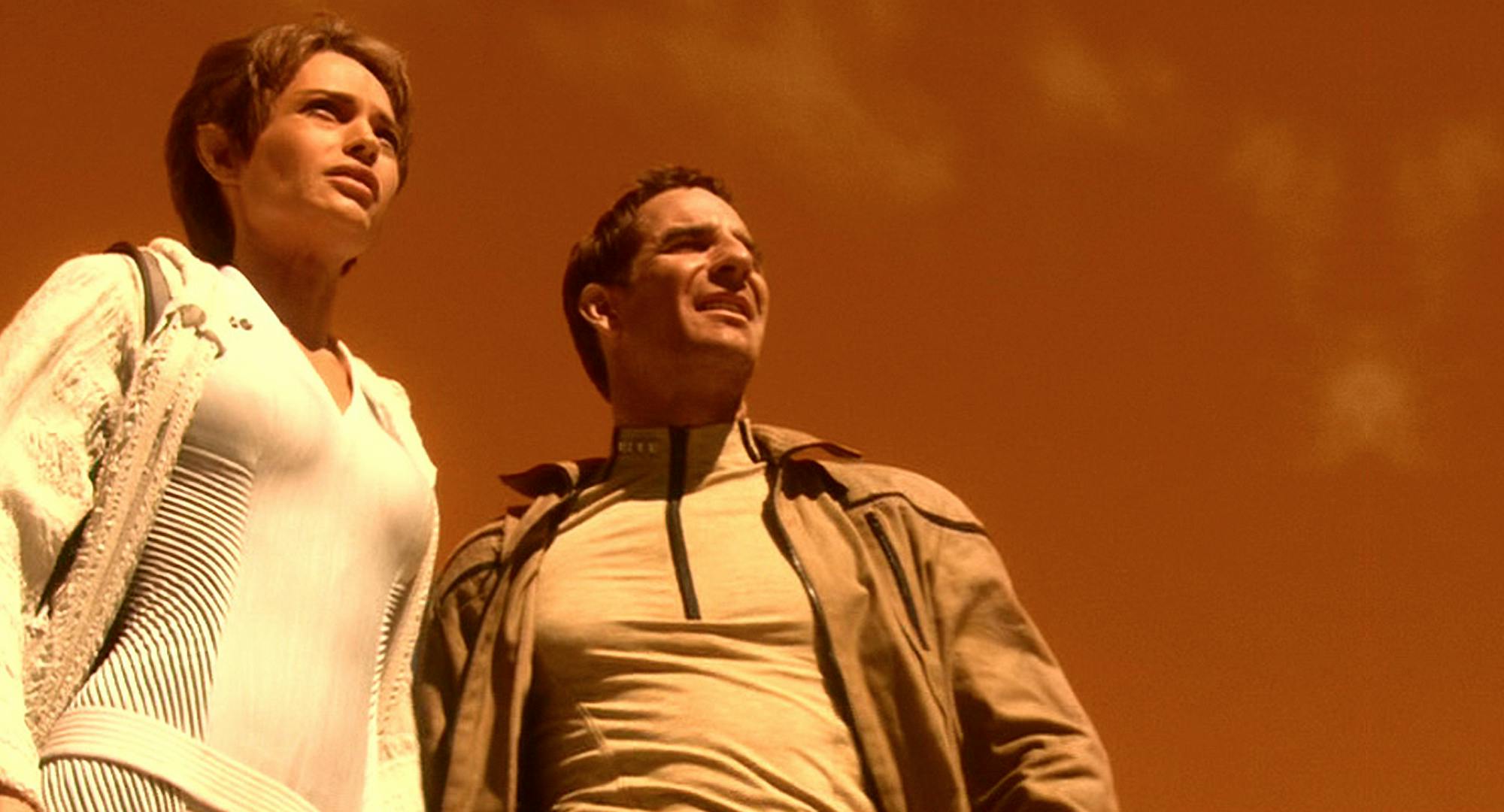
StarTrek.com
The secret to doing this was simply making Vulcan culture seem real and, importantly, flawed. The knowledge that the Vulcans are a complicated race of people with as many pitfalls in their history as our own is one of the most important things about not only these characters, but the mythos of Star Trek in general. After all, Star Trek has proven time and again that there’s more to their recurring alien races than viewers initially perceive.
There’s a fairly hilarious scene in the second part of the Enterprise arc, where Commander Tucker and Ambassador Soval have a conversation that could have very well serve as the plot synopsis for the first episode of Star Trek: Discovery. In a tense moment during “Awakening,” Tucker asks, “How many warning shots do Vulcans usually fire?" to which Soval answers, “None.” In microcosm, these two quick lines of dialogue sum-up the relationship between humans and Vulcans throughout all of Star Trek. Sure, the Vulcans are basically pacifists, but you don’t mess with them because of their violent past; they have the ability to be as militaristic as the rest of the quadrant but choose not to. That dichotomy is deeply profound, not only for these specific two series — Enterprise and Discovery — but also for the various metaphors the Vulcans represent in real life.
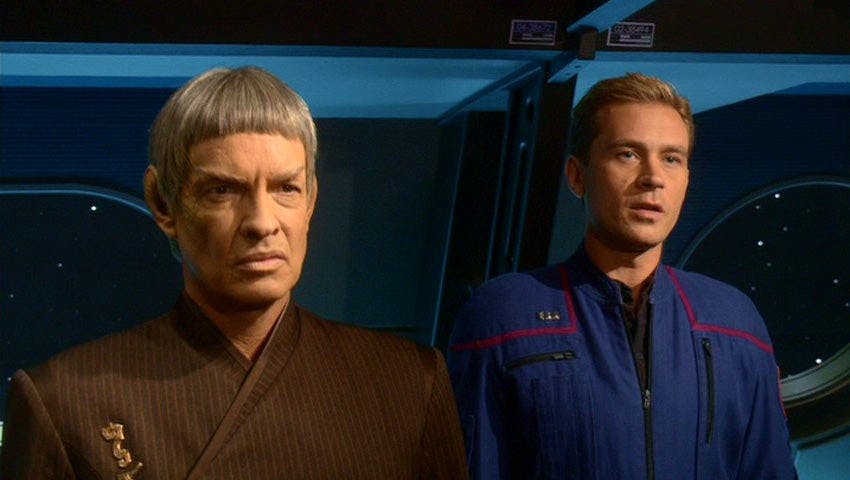
StarTrek.com
While some naysayers might complain that Enterprise changed the background the Vulcans too much, the reality is the entire depiction of this culture in the series was brilliant because it added depth that was previously absent. Clearly, we have decades of fan devotion that prove that Vulcans were cool before Enterprise but they were mostly cool when they were part of Starfleet. What Enterprise did was make the whole planet into a realistic political body, and that meant there was a diversity of different political viewpoints. In other words, Enterprise got rid of the concept of a stereotypical Vulcan, and showed, perhaps for the first time, how truly infinite and diverse this culture actually is.
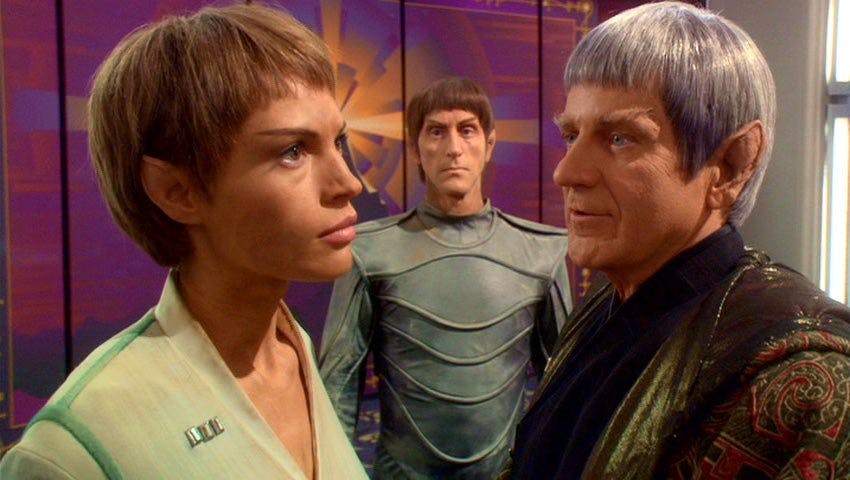
StarTrek.com
A good example of this is Robert Foxworthy as the war-mongering V’Las. When we meet him, V’las is hell-bent on wiping-out a religious sect of Vulcans called Syrrannites. He’s not doing this because it’s moral but, because in his own twisted logic, he’s trying to frame the Syrrannites for the bombing of the Earth embassy. His people blew up the embassy, and he wants humans off Vulcan, so “logically” he needs a scapegoat. In a sense, V’las is the beginning of the logic extremists we see in Star Trek: Discovery; the biggest difference being those Vulcans don’t even bother framing people for their bombings. A knee-jerk reaction would be to say that V’las doesn’t act like a real Vulcan. And yet, we know that Spock can smile as seen in “The Cage,” and that his brother, Sybok, can belt out huge belly laughs and commit the crime of ‘grand-theft-starship.’ There’s an entire emotional spectrum for Vulcans, and this Enterprise puts all those feelings into harsh perspective.
At this point, the Vulcans lack the faith to believe in the existence of Katras; the spirit of a Vulcan’s mind that is such an integral part of Spock’s journey in The Search for Spock, and Michael Burnham’s travails in “The Vulcan Hello,” “Battle at the Binary Stars,” and “Lethe.” In “Awakening,” we find out that Captain Archer is given the Katra of Surak — the spirit of the Vulcan who prevented his people from turning into the Romulans, or as they were known in ancient history, “those who marched beneath the raptor’s wings.”
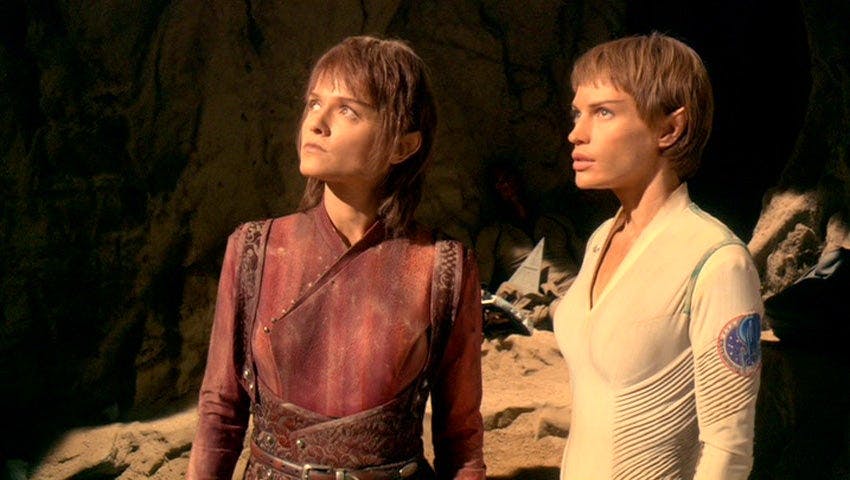
StarTrek.com
On the other side of all the corrupt politics is the young Vulcan T’Pau, played in this episode by Kara Zediker, (previously famous as the elder played by Celia Lovsky in the Star Trek: The Original Series episode “Amok Time”). If you were to watch Enterprise before TOS (which is arguably a good way to do it), T’Pau becomes an amazing character who goes on a fairly revelatory journey. In “Awakening,” T’Pau distrusts humans to the point of prejudice, but after a human, Captain Archer, is given the Katra of Surak, T’Pau comes around to the idea that humans probably are the ticket to a saner and more stable version of her planet.
In First Contact, and throughout all of Enterprise, it’s implied that Vulcans swept in and helped save us humans from ourselves. But, by the end of part three of this story, “Kir'Shara,” it’s clearly the other way around. With a human bringing the original Surak texts back to the Vulcan High Command, and a Starfleet ship preventing an all-out war with the Andorians, the slightly irrational and less experienced human race ends up being the missing piece that helps bring logic and sanity back to Vulcan.
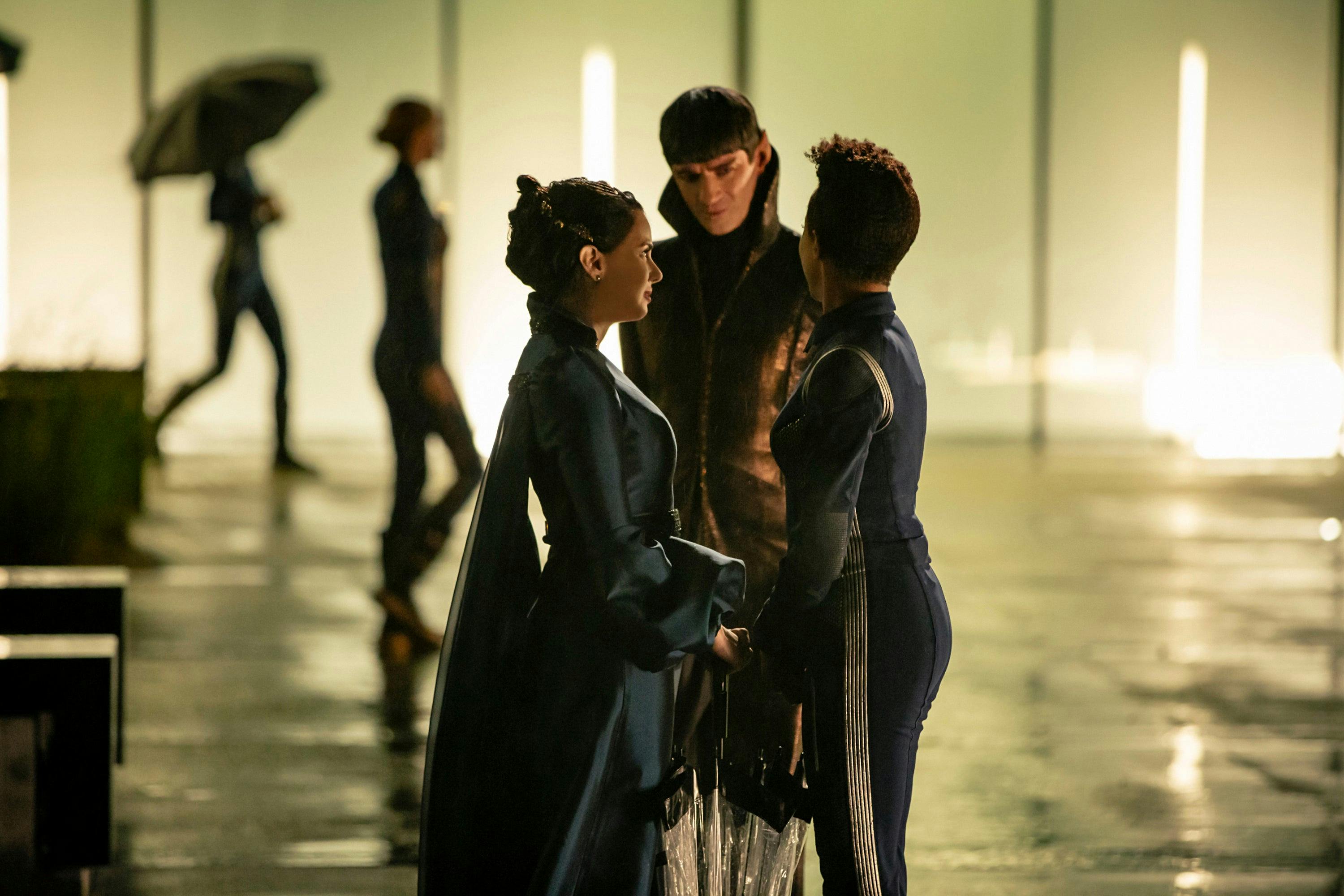
StarTrek.com
If you then fast-forward to Star Trek: Discovery, you find that everything about the Vulcan society Sarek, Amanda, and Michael Burnham are dealing with is still there. In “The Vulcan Hello,” we’re again reminded that Vulcans don’t fire warning shots, and in “Lethe,” a group of extremists uses terrorism as an act of xenophobia. Even though the planet Vulcan is a little more sophisticated and its government less corrupt than it was during Enterprise, the planet Vulcan of Discovery is still dealing with the same old problems. Fictionally, the Vulcans and humans are separate species, but in terms of social commentary, the moody Vulcans of both Enterprise and Discovery present a kind of dark mirror for our own political turmoils on planet Earth. Surak was able to stop all-out war thousands of years before the events of Enterprise, but extremists nearly take over the government in the 2150s. About 100 years later, Sarek is still dealing with highly prejudiced people on the one side, refusing to admit Michael to the Vulcan Expeditionary Group; and on the other side, he’s got logic extremists blowing up shuttle crafts and learning centers.

StarTrek.com
Watching this three-parter of Enterprise back-to-back with Discovery might make you feel bad for the good Vulcans. After all, in both eras, they are struggling to make sure their logical culture lives long and prospers, but are faced with more problems from within than from without. If you were just to scan the plot synopsis, the message might read as cynical - the more bad Vulcans change, the more they stay bad. But, when you watch these Enterprise episodes, there’s not a shred of cynicism in the stories at all. At this point, the Vulcans may not have gotten to the point of solid stability we see in Star Trek: The Original Series and Star Trek: The Next Generation, but they’re changing and getting better all the time. This fraught Enterprise epic isn’t about illogical Vulcans behaving badly; it’s about the hope that they’ll find a way to get over all this chaos.
So if you love Spock and Michael Burnham on Star Trek: Discovery, it might be a good time to thank Captain Archer, T’Pol and T’Pau on Star Trek: Enterprise. The future might not have been rediscovered without them.
This article was originally published on November 19, 2019.
Ryan Britt's (he/him) essays and journalism have appeared in Tor.com, Inverse, Den of Geek!, SyFy Wire, and elsewhere. He is the author of the 2015 essay collection Luke Skywalker Can't Read. He lives in Portland, Maine, with his wife and daughter.
Star Trek: Discovery Seasons 1-4 are currently streaming exclusively on Paramount+ in the U.S. Internationally, the series is available on Paramount+ in Australia, Italy, Latin America, the U.K. and South Korea, as well as on Pluto TV in Austria, France, Germany, Italy, Spain and Switzerland on the Pluto TV Sci-Fi channel. It will also stream exclusively on Paramount+ in Italy, France, Germany, Switzerland and Austria later this year. In Canada, it airs on Bell Media’s CTV Sci-Fi Channel and streams on Crave. STAR TREK: DISCOVERY is distributed by Paramount Global Content Distribution.
Stay tuned to StarTrek.com for more details! And be sure to follow @StarTrek on Facebook, Twitter, and Instagram.

